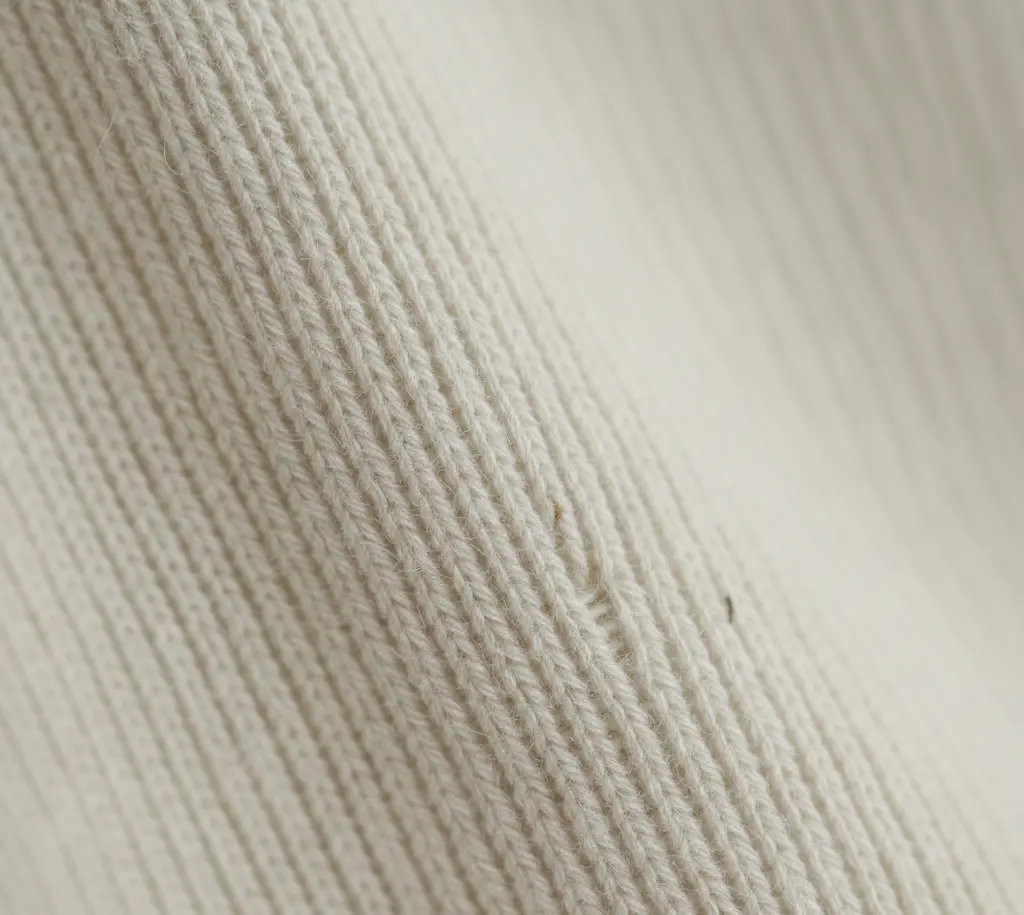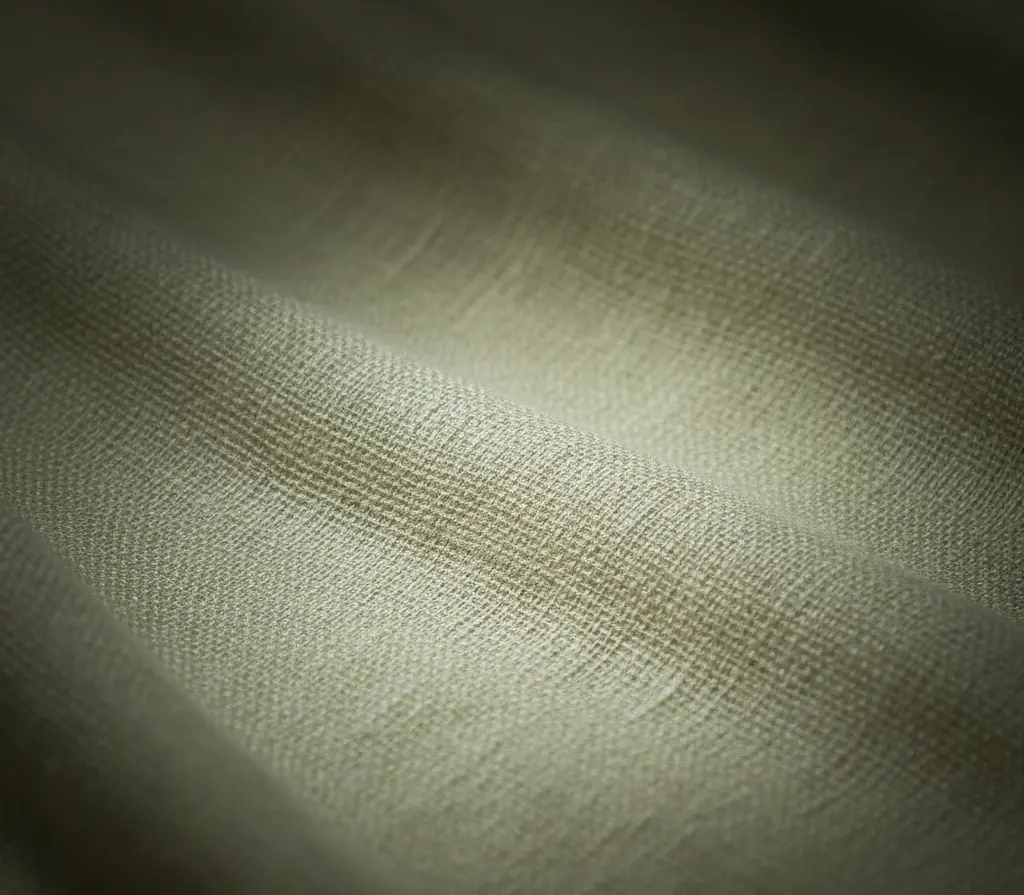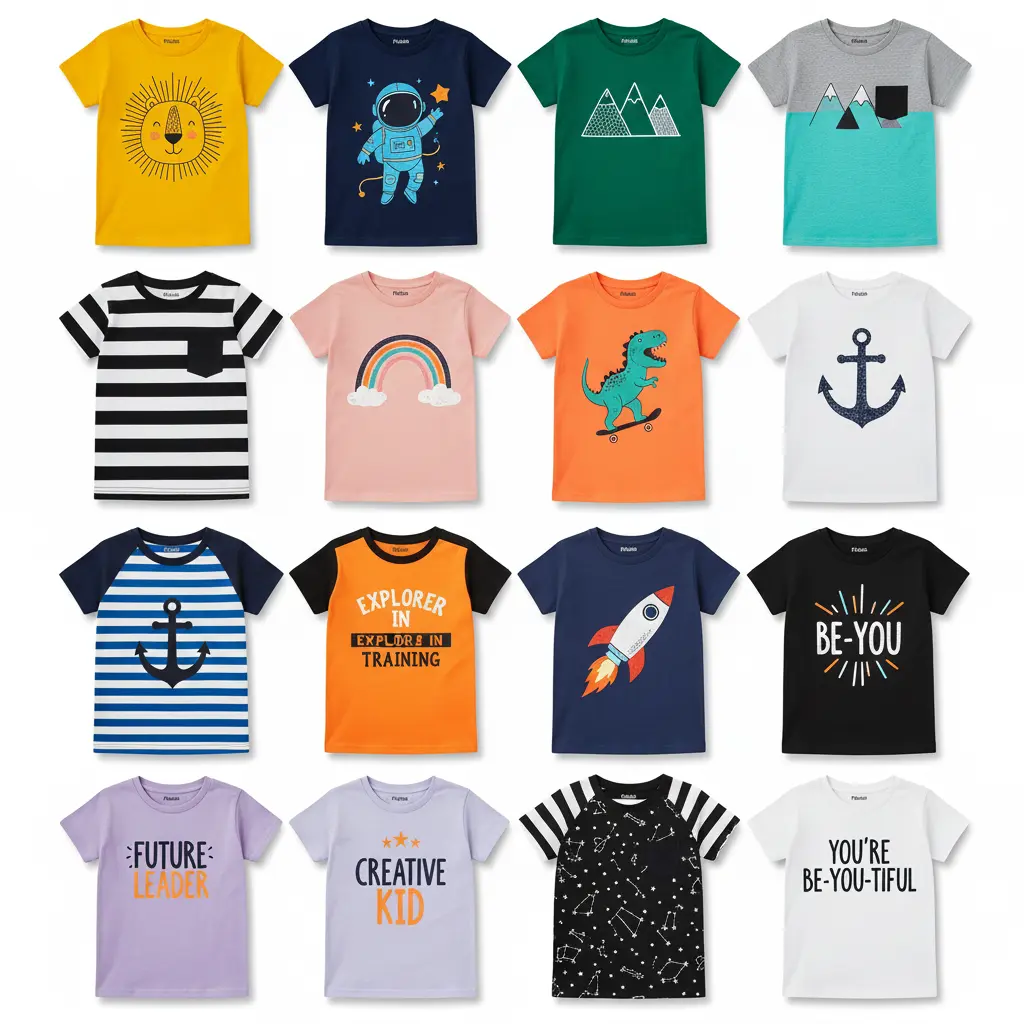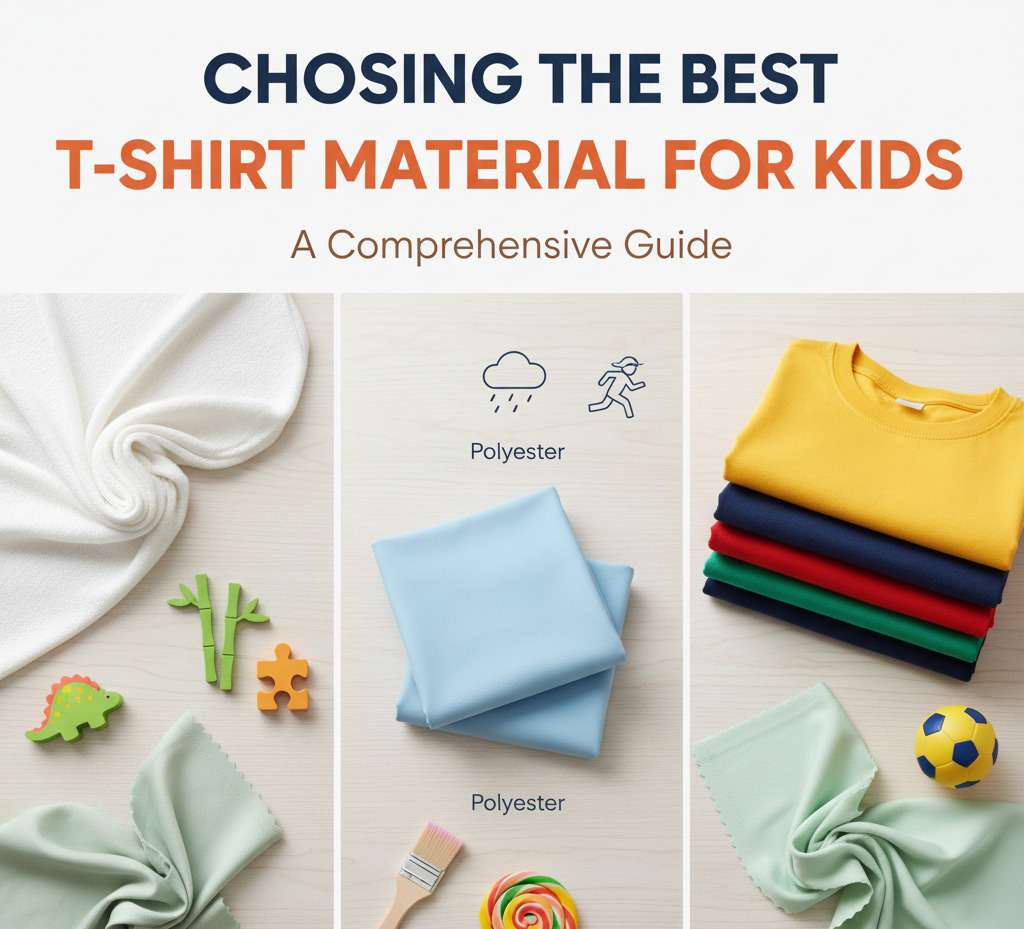Did you know a child will wear approximately hundreds of shirts before they reach adulthood? Finding the best t shirt material for kids does not need to be a headache. Comfort, how long it lasts and safety should be top priorities for any parent. It can be tricky getting through all the available choices to find what works best for your kid. I will walk you through the options available.
At ForKiddos, we’re passionate about providing clothing that not only looks great but also supports your child’s active life. We’re breaking down the most popular t-shirt materials, helping you make informed decisions for your kiddo’s comfort, style, and well-being.
Before we examine specific materials, we must establish essential qualities:
- Comfort: Is the material soft on delicate skin?
- Durability: Can it handle lots of washing and hard playing?
- Care: How easy is it to wash and dry?
- Safety: Does it lack harmful chemicals and dyes?
- Cost: How affordable is it?
Fabric Options for Kids’ T Shirts
Cotton: The Reliable Option
Cotton t shirts are common in kids’ wardrobes. They are soft, allow the skin to breathe and do not cost much. Most kids find cotton feels good, especially when it is warm. Cotton comes in a few forms, each with different traits.
Cotton Types:
- Conventional Cotton: This is the usual and most affordable choice. It is often grown using chemical fertilizers and pesticides.
- Organic Cotton: This type is grown without synthetic fertilizers or pesticides. This makes it better for the environment and softer. It is good for sensitive skin.
- Ring Spun Cotton: The fibers are twisted to make a stronger, softer yarn. It lasts longer and keeps its shape better than standard cotton.
- Pima/Supima Cotton: This has extra long fibers that are known for being very soft, strong and long lasting. It costs more.
What I Like About Cotton T Shirts:
- They are soft and comfortable
- They allow the skin to breathe
- They are affordable (especially conventional cotton)
- They are easy to wash
- They are easy to find
What I Dislike About Cotton T Shirts:
- They shrink when washed
- They wrinkle easily
- They are not as strong as other materials
- The colors fade
- They soak up moisture, which is not good in cool weather

Polyester: The Long Lasting Option
Polyester t shirts are known to last a long time. They do not wrinkle and they wick away moisture. They are a popular choice for sports uniforms and workout clothes. Polyester can be washed a lot and worn often, which makes it good for active children. The color and shape hold up better than cotton.
What I Like About Polyester T Shirts:
- They last a long time
- They do not wrinkle
- They wick away moisture
- They dry fast
- They do not fade or shrink
- They are affordable
What I Dislike About Polyester T Shirts:
- They do not breathe as well as cotton
- They may feel rough if you have sensitive skin
- They can trap smells
- They are not as good for the environment as natural fibers
- They tend to pill

Bamboo: Soft and Good for the Earth
Bamboo t shirts are a newer choice for kids’ clothes. They are becoming more popular because they are soft, allow the skin to breathe and are good for the Earth. Bamboo fabric feels soft, making it a great choice for kids who have eczema or are sensitive. Bamboo is a sustainable resource, so it is better for the environment than conventional cotton.
What I Like About Bamboo T Shirts:
- They are very soft
- They allow the skin to breathe
- They wick away moisture
- They are good for the environment
- They fight bacteria naturally
- They are hypoallergenic
What I Dislike About Bamboo T Shirts:
- They cost more than cotton or polyester
- They may shrink when washed
- They may need special care (check the label)
- They do not last as long as polyester
- They wrinkle easily

Blends: The Best of Both Worlds
Many t shirts mix different materials, like cotton and polyester or cotton and bamboo. Blends give you the good parts of different fabrics. They mix what you want while lessening the bad. Blends are often suggested for kids’ t shirts to get the comfort of cotton and how long polyester lasts, or the softness of bamboo with the lower cost of cotton.
Blend Options:
- Cotton/Polyester: This mix is strong, does not wrinkle and costs less than 100% cotton. It is good for daily wear and playing hard.
- Cotton/Bamboo: This combines how soft and breathable both materials are. It is good for kids who have allergies or sensitive skin.
- Tri Blends (Cotton/Polyester/Rayon): This mix is soft, looks good and lasts. You can find it in stylish t shirts.
What Else to Think About
While the fabric is important, some other things matter when picking t shirts for your kids:
Fit and Style
A t shirt that fits well feels better and lets kids move freely. Think about your child’s body and what they like when picking a size and style. Some kids want shirts that are loose, while others want something more fitted. Let your kids help pick out their clothes. They will likely wear clothes that feel good.
Neckline
The neckline impacts how comfy a shirt is. Crew necks are common, but they can feel tight to some kids. V necks and scoop necks are more open. Try different styles to learn what your child likes best.
Sleeves
Short sleeves are normal, but long sleeves keep you warm when it is cold. Raglan sleeves look sporty and let you move your arms more freely. Think about the weather and what you will be doing when picking a sleeve length.
Color and Design
Kids want t shirts that look cool. Let your child pick out designs and colors they like. They will likely wear clothes that show what they like and who they are. Dark colors may fade faster and have more dyes, which could bother sensitive skin.

Safety
When buying best t shirt material for kids prioritize these safety features for younger kids:
- Tagless labels: These get rid of itchiness.
- Snaps or zippers: Make sure they do not have lead and are attached well.
- Drawstrings: Do not buy shirts with drawstrings around the neck. They can be a choking hazard.
How to Wash Kids’ T Shirts
If you care for your kids’ t shirts correctly, they will last longer. Here are a few tips:
- Check the label: Do what the maker says.
- Wash inside out: This keeps the colors from fading and the fabric from pilling.
- Use cold water: This is easier on fabrics and shrinks them less.
- Use mild detergent: Harsh detergents can hurt fabrics and irritate sensitive skin.
- Do not use bleach: This weakens fibers and makes colors fade.
- Tumble dry on low: High heat shrinks and hurts clothes.
- Iron on low heat: If you need to iron, do it inside out on low heat.
- Store correctly: Fold or hang to keep from wrinkling.
Finding the Right T Shirt
Picking the best t shirt material for kids depends on how comfortable it is, how much it costs and what is important to you. Here is a quick review:
- Daily wear: Cotton or a cotton/polyester blend.
- Active kids: Polyester or a polyester blend.
- Sensitive skin: Organic cotton or bamboo.
- Earth conscious parents: Organic cotton or bamboo.
Try different materials and styles to find the right t shirt for your child. Pay attention to what they like and be open to new choices. If you try, you can find t shirts your kids will be happy with!
Sustainable and Ethical Production Matters
Parents know more about how their choices affect the Earth and garment workers. Picking t shirts that are made from sustainable and ethical materials helps make things better.
What to Look For:
- Certifications: Find certifications like GOTS (Global Organic Textile Standard) for organic cotton and Fair Trade for ethical production.
- Transparency: Support brands that tell you about their supply chain and how they make things.
- Sustainable Materials: Pick t shirts made from recycled materials, organic cotton, bamboo or other sustainable fibers.
- Ethical Labor Practices: Support brands that pay fair wages and offer safe places to work.
We can help make the fashion industry more sustainable and ethical if we buy kids’ t shirts wisely.
Clearing up Confusion
Some misunderstandings exist about different fabrics. It is important to know the facts when buying clothes for your children.
Misunderstanding 1: All Cotton Is the Same
I have said before, conventional, organic, ring spun and Pima cotton are different. Organic and good cottons like ring spun and Pima are softer, stronger and better for sensitive skin.
Misunderstanding 2: Polyester Always Feels Bad
Some polyester fabrics might feel rough, but newer ones are treated to be softer and allow the skin to breathe. Find polyester fabrics that are labeled





